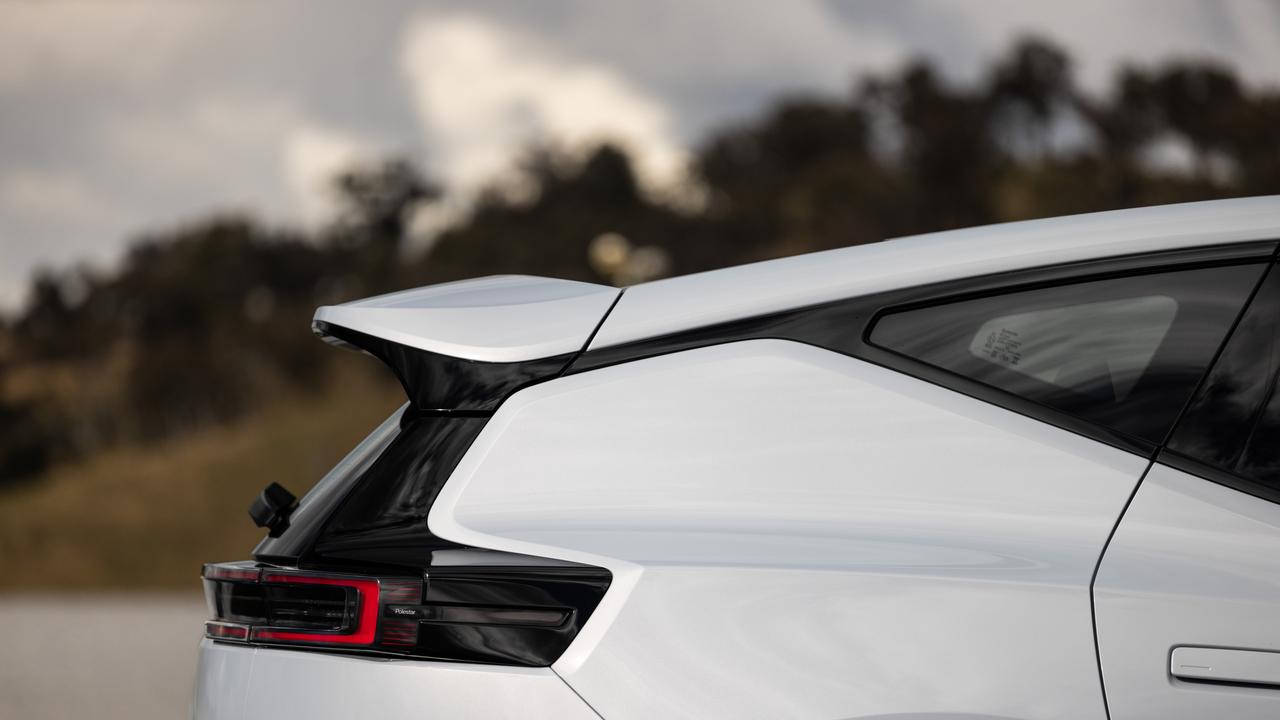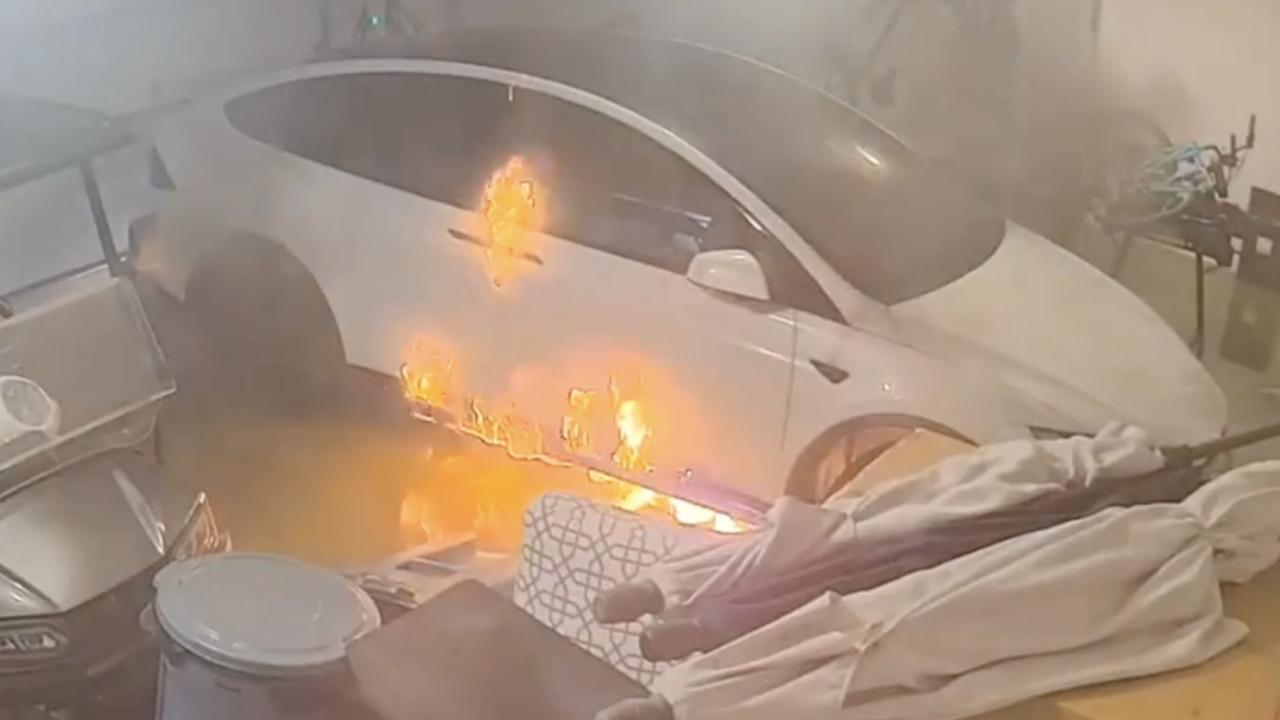Hyundai confirms Inster EV for Australia
A cute and compact electric hatchback aims to spice up an increasingly competitive sector - and it does not come from China.
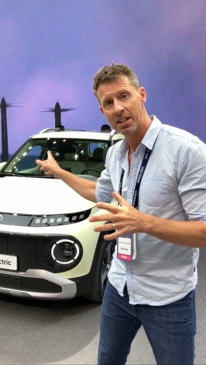
Motoring News
Don't miss out on the headlines from Motoring News. Followed categories will be added to My News.
Thought the small city car was dead? Hyundai’s about to launch the new Inster urban EV to tackle Australia’s ever-growing number of Chinese newbies.
It’ll be Hyundai’s smallest, cheapest electric car, beneath its Kona, Ioniq 5 and Ioniq 6 EVs. The Inster hits showrooms in early 2025 with a target price close to $40,000 – hopefully less.
Rivals watch with keen interest.
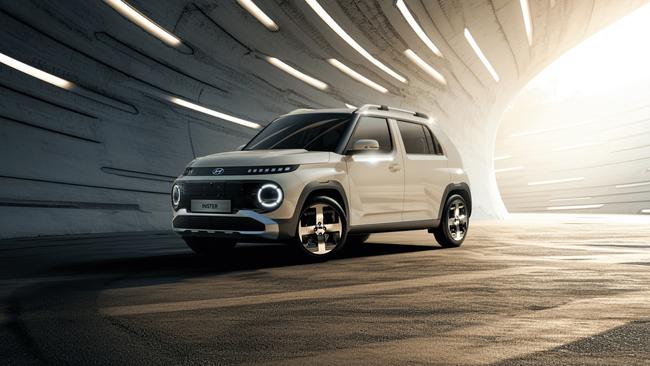
Drive-away pricing of the MG ZS EV ($34,990), GWM Ora ($35,990) and BYD Dolphin (about $39,000) make things challenging.
But, as I pilot a pre-production Inster through Seoul’s congested mean streets, this South Korean tiddler does a grand job of winning hearts and minds.
It’s fun-sized from the outside – not much longer than a titchy Fiat 500 – but from my wide and spongy-comfy driver’s seat it’s an impressive Tardis-like interior.
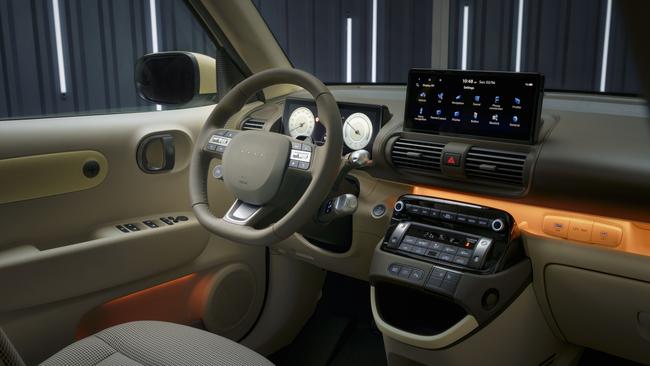
The top-heavy SUV design brings airy headroom, I’m not banging elbows with my front-seat passenger, and no centre console means there’s walk-through space in the front. Unusual stuff for a compact car.
Hyundai knows the Inster must be flush with goodies to keep up with spec-generous Chinese rivals, and news is generally good.
The cabin feels over-eco in places and too hard-plasticky in others: recycled bottles and sugarcane tick sustainability boxes, but are hardly plush.
Although it’s hard to grumble when you’ve got heated and ventilated faux leather seats, heated steering wheel, panoramic roof, wireless charging, 64-colour ambient lighting and two 10.25-inch screens covering driver display and Apple CarPlay/Android Auto infotainment.
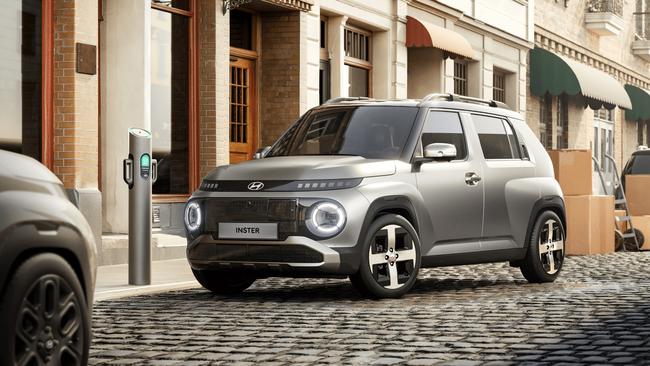
Key for those considering the leap from petrol to an electric car, the Inster’s cabin feels altogether normal. Unlike many EVs – Teslas included – Hyundai’s kept proper buttons for climate and media, rather than sending everything through a giant screen’s mazes of menus.
It’s an unashamed city car aimed at young urbanites and cool retirees.
So, as you’d imagine, its driving talents are best enjoyed in town.

Pint-sized packaging means it’s easy to park, turns tightly and zips through traffic.
As with all instant-torque electric cars, immediate throttle response means it takes off with gusto and in silence.
It’s superb at city speeds, but there’s not much performance beyond that. I sense a steep hill with four on board would have the Inster scrabbling for extra electrons.

Australian versions will come with two powertrain/battery choices. The entry level has a 42kWh battery with 71kW/147Nm, and the flagship a 49kWh with 85kW/147Nm. Neither’s quick at 11.7 and 10.6 seconds to 100km/h respectively.
Range? We’re promised 305km and 355km depending on battery, which – I assure you – is ample for urban life.
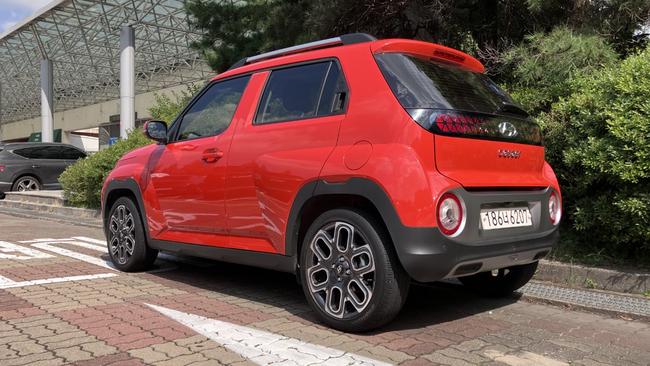
Positively, every Hyundai EV I’ve tested has been accurate – unlike electric MG, BYD and Peugeot rivals – and the Inster behaved likewise.
It public charges up to 120kW, the battery taking 30 minutes to go from 10-80 per cent. An 11kW on-board charger is standard for slower home AC charging.
There’s desirable V2L functionality, meaning the Inster can charge an electric bike or laptop, or power a fridge.
As a little car, at 110km/h highway noise is expectedly pronounced, not helped by our pre-production car’s camouflaging shrouds.
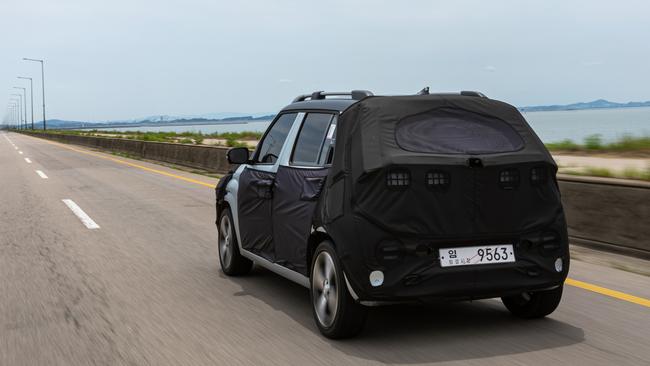
But ride quality’s reasonable, the suspension set up for comfort rather than cornering heroics. Hyundai Australia’s not confirmed if there’ll be local-specific tuning, but the Inster was hardly a wobbly thing, proving neat in turns and with pleasing steering feel. Reassuringly Hyundai.
Safety impresses with radar cruise control, rear cross traffic alert, blind spot monitor and surround-view camera all included, although the Inster suffers like all Hyundais with overenthusiastic beepy warnings.
The more time spent with the Inster the more it grows on you, especially its cheery round LED face and pixel lighting front and rear.

It’s a bit gawky and skinny looking, but bold colours add fun and chunky arches add menace. A promised more rugged Inster Cross version should push that further.
It’s not a car for everyone. The 351L boot is tiny, and there are only two rear seats. But these back chairs recline, slide and offer incredible leg room for an EV this size.
VERDICT
Four stars
A clever, versatile and fun little EV with surprising cabin space, but Hyundai must price it right to compete with budget rivals.
Originally published as Hyundai confirms Inster EV for Australia



